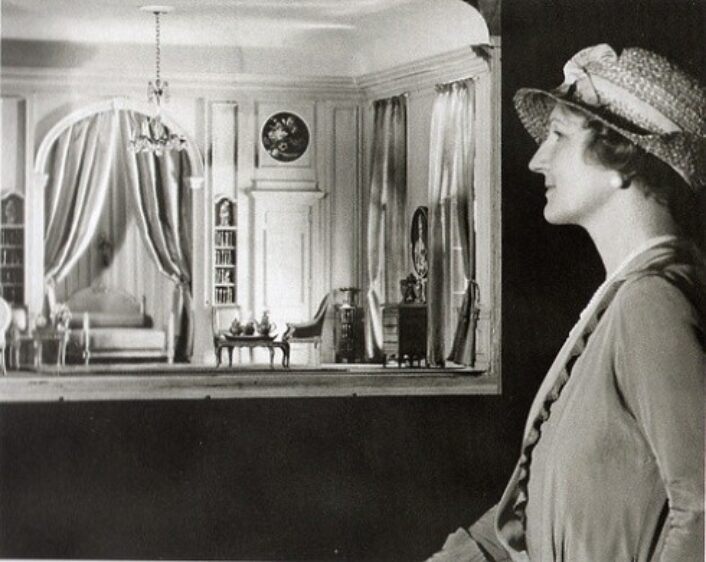Architecture
Small-scale worlds
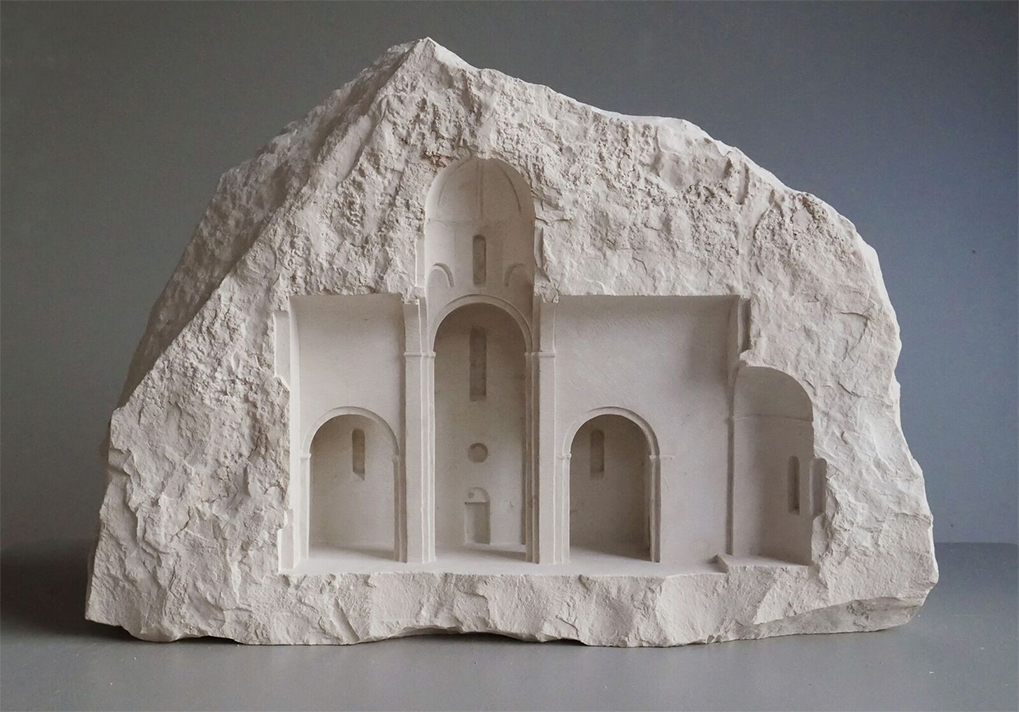
Elevation VIII, Mren Cathedral.
Image courtesy of: This Is Colossal
Matthew Simmonds, the Copenhagen-based artist, is meticulous in his work; he is a master in stone and marble carvings. Simmonds carves miniature architectural interiors; the white sculptural forms are cut from and inside the raw stone. When completed, this allows for a compelling contrast between the design’s and the material’s natural surface.
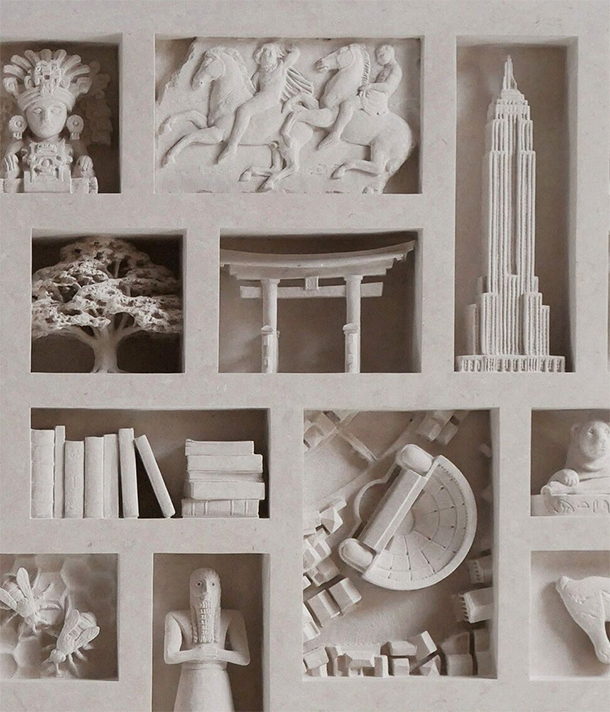
Windows 2017.
Image courtesy of: This Is Colossal
Simmonds’ “Windows” series has been his most complex piece to date. Serving as a curio cabinet, there are rows of carved openings and each window is filled with a wide range of creations. There is a miniature iguana, small fruit, and tiny models of buildings.
Simmonds’ intention was to show the world in miniature and through visual symbols of a variety of cultures. This piece in particular references San Francisco and was specifically created for a show in the Bay Area.
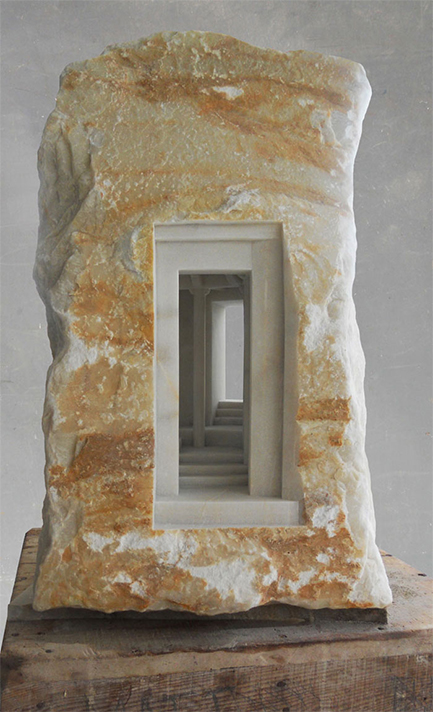
Part of a 2014 exhibition in Oxford titled, “On Form 14”.
Image courtesy of: Bored Panda
The sculptures take at least three weeks to complete; but they can take up to several months to detail, depending on how complex and large they are. In addition to the carving time, there is a significant amount of time spent on research and design.
Specifically, the “Window 2017” piece, took nine months to complete. Within the raw slabs of stone, intricate internal worlds are revealed. The delicate work that is necessary to create these masterpieces takes an incredible amount of patience and dedication.
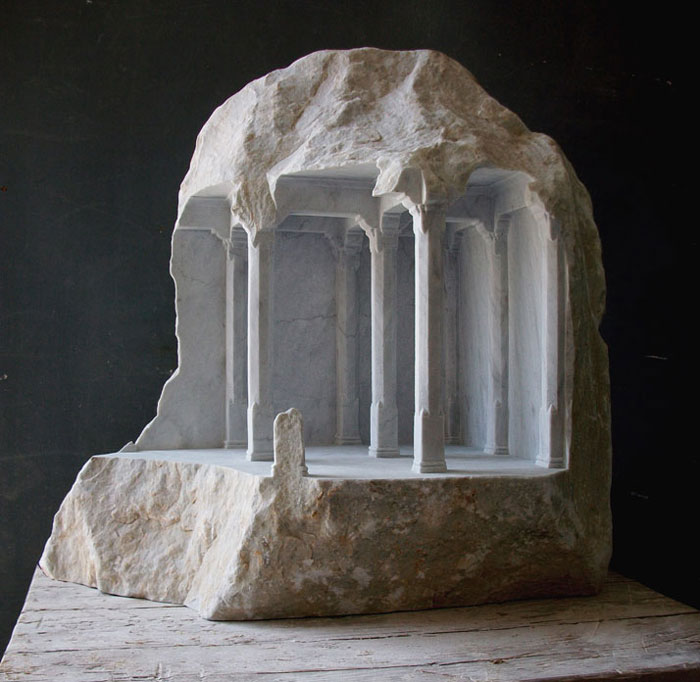
In 1997, Simmonds decided to take his passion one step further. The artist relocated to Pietrasanta, Italy to master the art of classical marble sculpturing.
Image courtesy of: Bored Panda
In describing his work, Simmonds says, “To create a sculpture that catches the light and structure of a building and lets the eye wander, to feel that here my eye could live, here a part of me could stay, is a great achievement.”
Simmonds is a graduate of art history with a focus on medieval art and architecture. Obviously his studies had a big influence in what he now does and in his lifelong fascination with stone.
Interesting fact, Simmonds trained as an architectural stonemason and worked on the restorations of several buildings across Britain, most notably Ely Cathedral and Westminster Abbey.
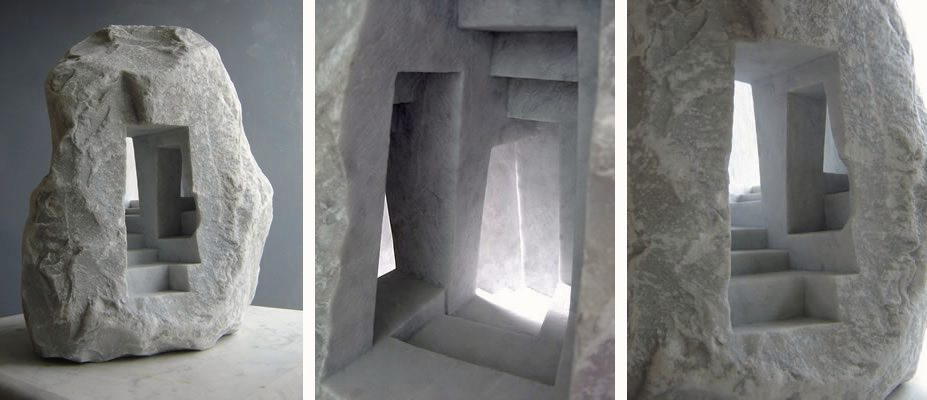
Image courtesy of: Home LI
It is Simmonds’ fascination in medieval architecture that translates into his pieces. Seen above, for example, the vast halls are complete with the intricate columns and passageways. With a mix of Etruscan civilization, Greek or Buddhist art, the influences are numerous.
Simmonds is a master with changing viewpoints, this enables light to play a strong role in portraying the sculpture. Truly fascinating!
